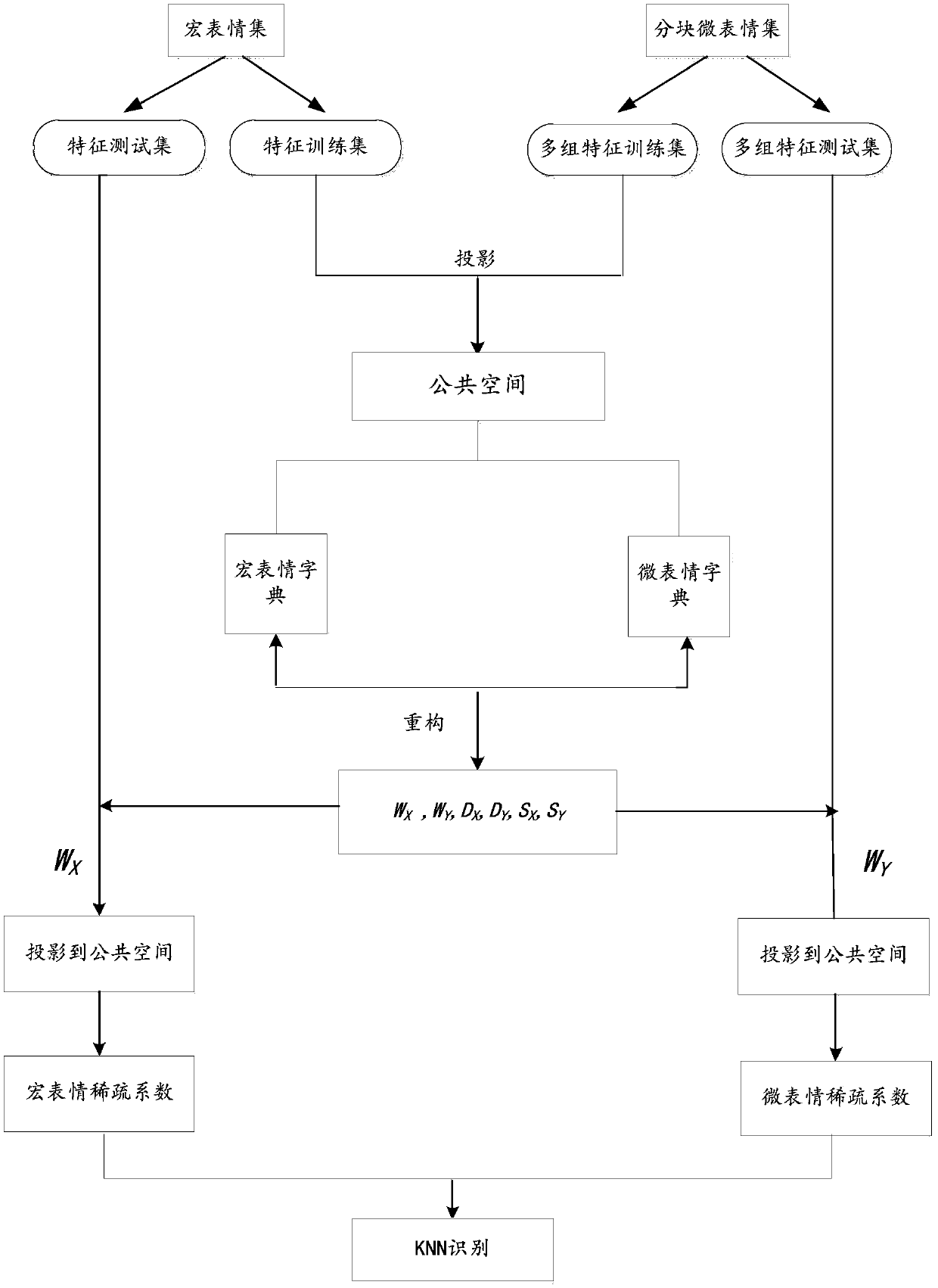Micro expression recognition method based on multi-feature multi-task dictionary sparse migration learning
A transfer learning and recognition method technology, applied in the field of modal recognition and machine learning, can solve the problems of incomplete sample label information, small number of micro-expression databases, unsatisfactory results, etc., and achieve the effect of improving recognition performance
- Summary
- Abstract
- Description
- Claims
- Application Information
AI Technical Summary
Problems solved by technology
Method used
Image
Examples
Embodiment 1
[0067] A micro-expression recognition method based on multi-feature multi-task macro-expression dictionary sparse transfer learning, such as figure 1 As shown, including the training phase and the testing phase;
[0068] A. The training phase, including the following steps:
[0069] (1) Each picture in the micro-expression domain is divided into several sub-blocks on average; the sample picture example in the macro-expression domain is figure 2 Shown; the sample picture example in the micro-expression domain is image 3 shown;
[0070] (2) Extract the most representative features to the macro-expression domain and the micro-expression domain; for the macro-expression domain, the most representative feature extracted is the LBP feature; the LBP feature is the most representative texture feature in the macro-expression domain; In order to fully reflect the characteristics of micro-expression dynamic sequences, for each block in the micro-expression domain, the most represent...
Embodiment 2
[0080] A micro-expression recognition method based on multi-feature multi-task macro-expression dictionary sparse transfer learning described in Embodiment 1, the difference is that
[0081] Described step (2), extracts the most representative feature to macro-expression domain and micro-expression domain, comprises:
[0082] a. Feature extraction is performed on the macro-expression domain and the micro-expression domain. For the macro-expression domain, the extracted features no x refers to the number of samples in the macro expression domain; refers to the n in the macro expression domain x LBP features extracted from samples, R refers to the size of matrix X; m x refers to the feature dimension of the macro-expression domain;
[0083] For the micro-expression domain, since micro-expression extracts four different sets of features, the extracted features no y refers to the number of samples in the micro-expression domain;
[0084] Y 1 , Y 2 , Y 3 , Y 4 respect...
PUM
 Login to View More
Login to View More Abstract
Description
Claims
Application Information
 Login to View More
Login to View More - R&D
- Intellectual Property
- Life Sciences
- Materials
- Tech Scout
- Unparalleled Data Quality
- Higher Quality Content
- 60% Fewer Hallucinations
Browse by: Latest US Patents, China's latest patents, Technical Efficacy Thesaurus, Application Domain, Technology Topic, Popular Technical Reports.
© 2025 PatSnap. All rights reserved.Legal|Privacy policy|Modern Slavery Act Transparency Statement|Sitemap|About US| Contact US: help@patsnap.com



